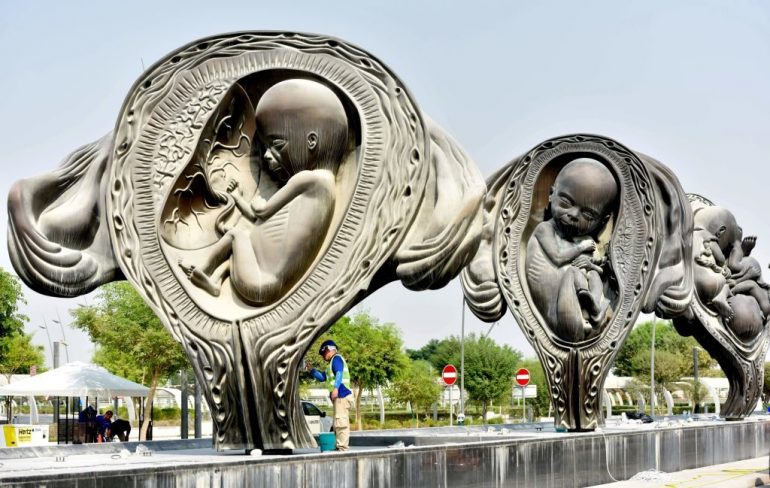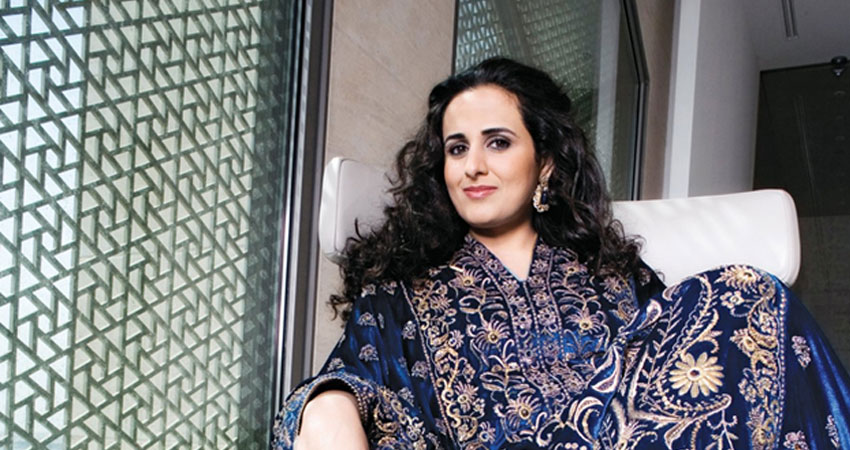Damien Hirst’s The Miraculous Journey, a set of 14 bronze monuments that depicts the transformation of a sperm cell and an egg cell into a human being, was unveiled in Doha’s Sidra Medical and Research Hospital, in Qatar back in 2013. Not long after, the works were covered up. Officials stated that the statues were put up for repairs, though there’s speculation that the real reason was that there’s a public outcry against the monuments. But recently, officials at Qatar have re-unveiled the statues.
Not To Please Everyone
The Qatar Foundation, which owns both the hospital and all the artworks displayed in it, said that they don’t expect everyone to appreciate them. Art Specialist Layla Ibrahim Bacha adds that they don’t expect everyone to understand the monuments and that they expected the statues to promote more people to talk about health-care issues.
She continues by saying that the statues reflect the hospital mission of providing health-care for both women and children and thinks that the hospital was the perfect location for the said work. The hospital is decorated with many art pieces, among which were works from both hi-profile local and foreign artists, including Hirst and Tracey Emin.
Ms Bacha explains that the works were not just meant to be decorative. They’re also there to foster debates while making the patients calm. Some artists are just happy that their artworks were chosen for the hospital’s display. Jaber al-Azmeh, one of the participating artists, for example, was delighted that his photographs get to be selected for the hospital. Others, like Hirst, hopes to amaze their intended audience while making it an atmosphere to let the debates happen.
Sheikha al Mayassa Hamad bin Khalifa al-Thani, the current head of the Qatar Museums Authority and the sister of the current Emir, was the person who commissioned the monuments from Hirst. She’s reported to control a budget of $1 billion annually on behalf of Qatar Museums. The statues are part of Qatar’s project to make the number of art publicly present in Doha grow. Said sculptures had a price tag of $20 million back in 2013.
In an article by the New York Times, she said that having a lot more works that feature nudity is more daring than having the statues. In an interview in her office at the Museum of Islamic Art, she added that the Koran also describes the miracles of birth and that such works and discussion is not in violation of anything in the holy book.
Regardless, the statues were still covered up after a supposed social media outcry. It seems that the general public and the liberal rich of the Muslim countries don’t see eye-to-eye when it comes to what kind of art should and should not be allowed.
Art In Qatar
Artnet.com has published an article on their site saying that a spokesperson of Qatar Museums has stated that the public reaction to the statues has been “interesting” and that there was a massive amount of support for the sculptures. Echoing Ms Bacha’s sentiments, the spokesperson also pointed out that they were expecting criticism from some of the public and that the point of the statues was to encourage the public to have the discussions.
Qatar Museums assured that even if there’s another public outcry about the statues, they will remain in public view.
In recent years Qatar has become a significant client for contemporary works of art and is posturing themselves as the most liberal of the Muslim nations, rivaling Saudi Arabia, which bought the Salvador Mundi painting almost one year ago.
1st Image: The Miraculous Journey, via artnet.com
2nd Image: Sheikha al Mayassa Hamad bin Khalifa al-Thani, current Head of Qatar Museums, via scoopempire

